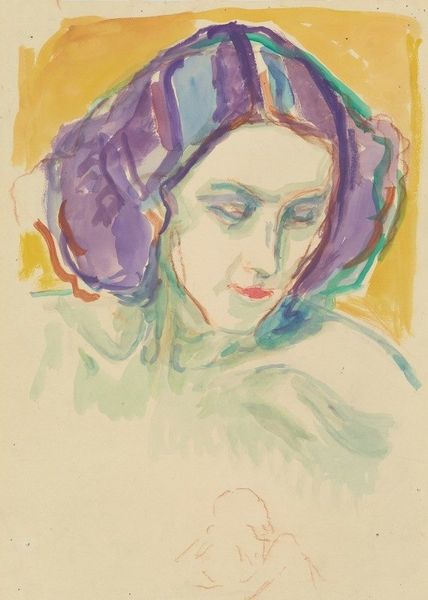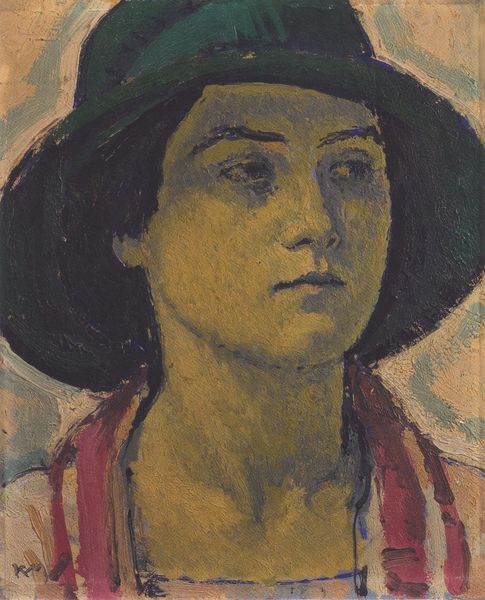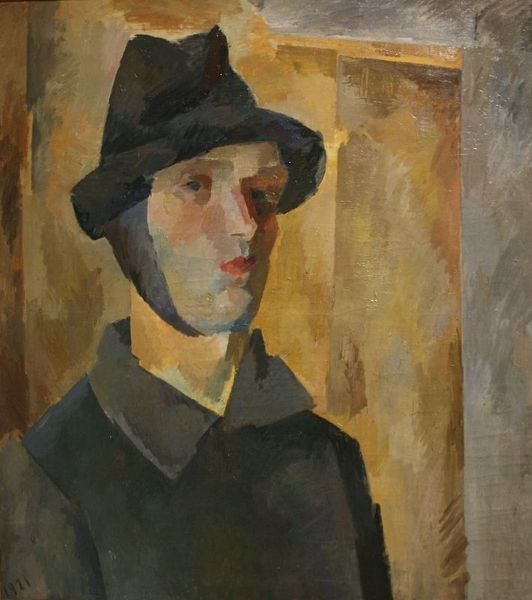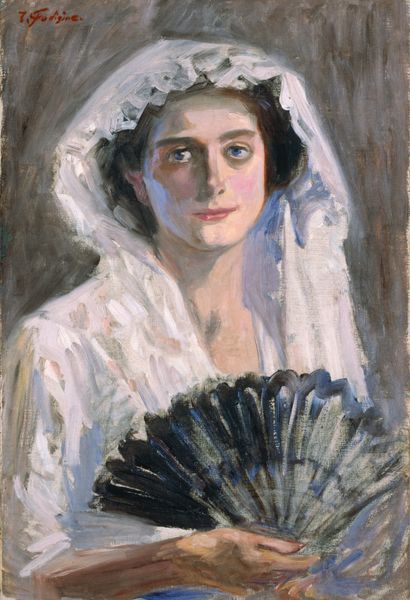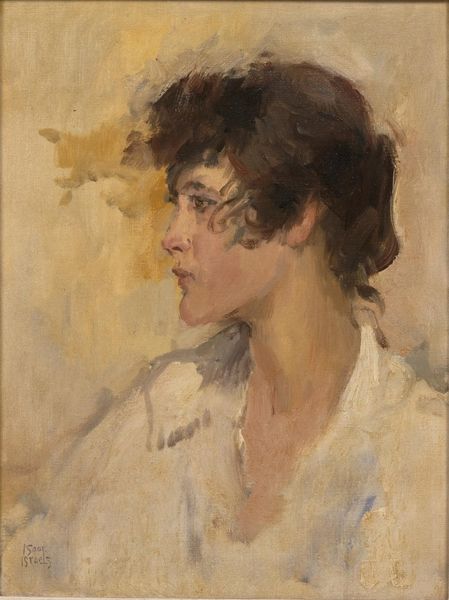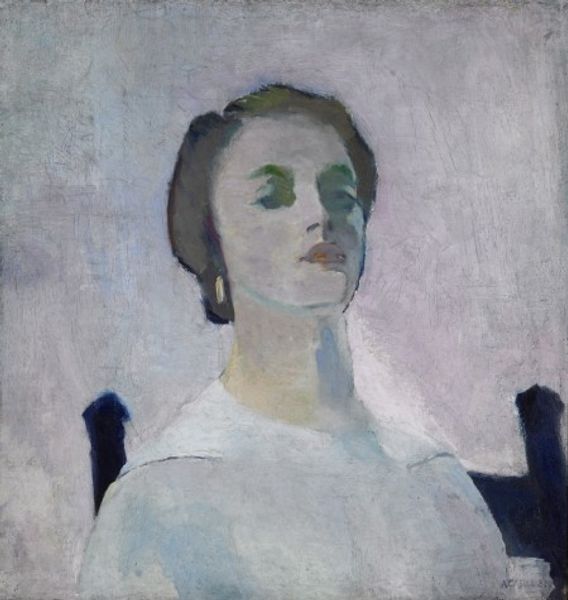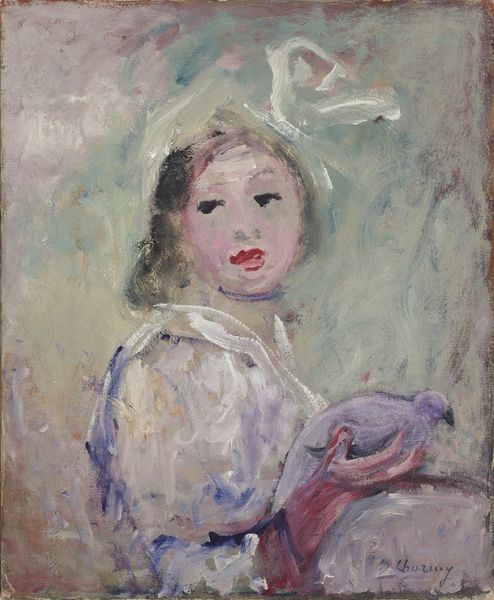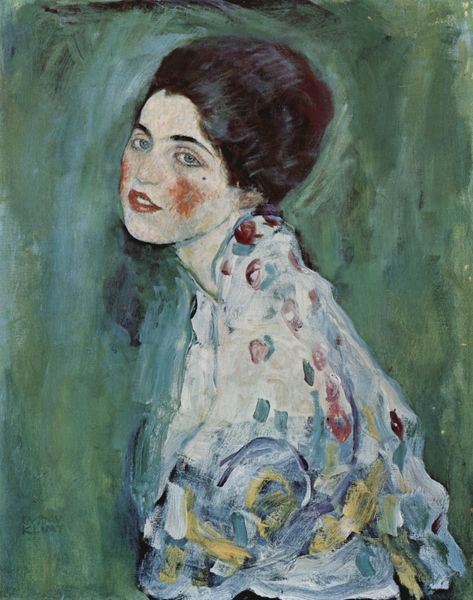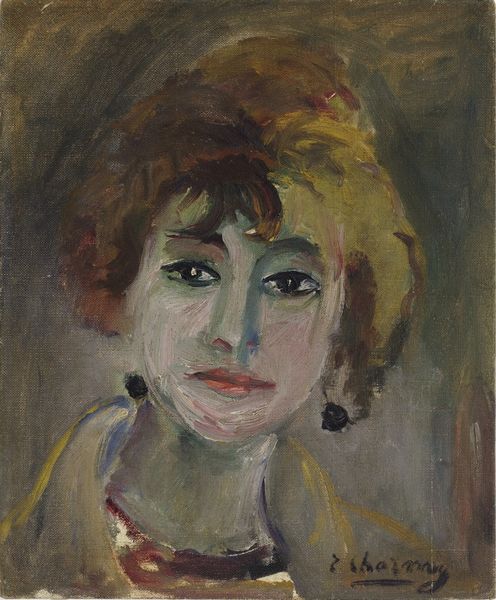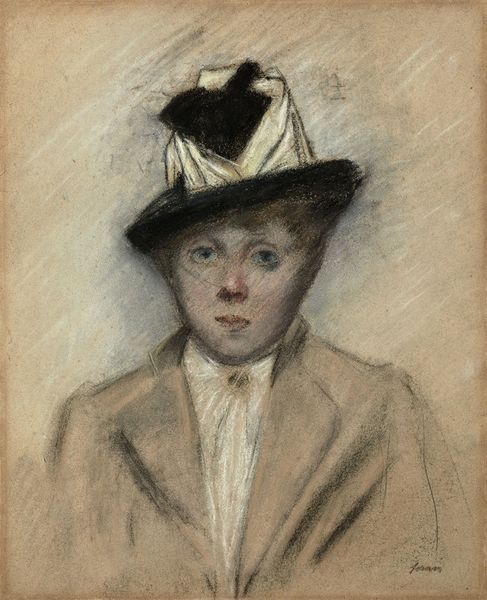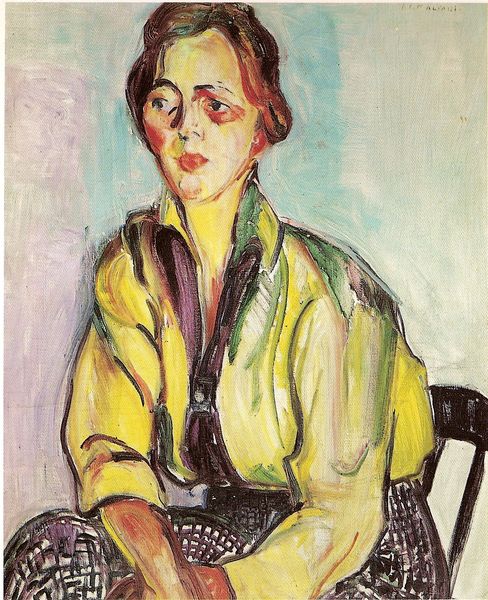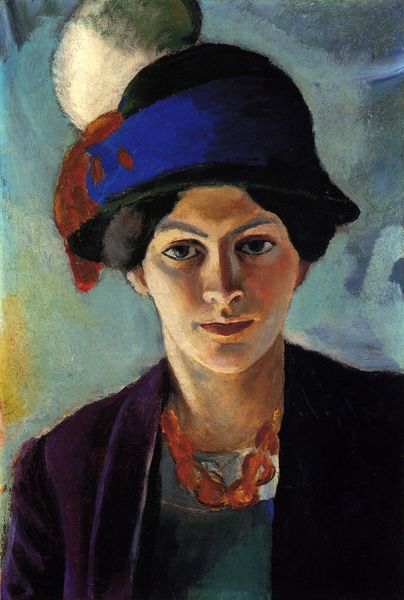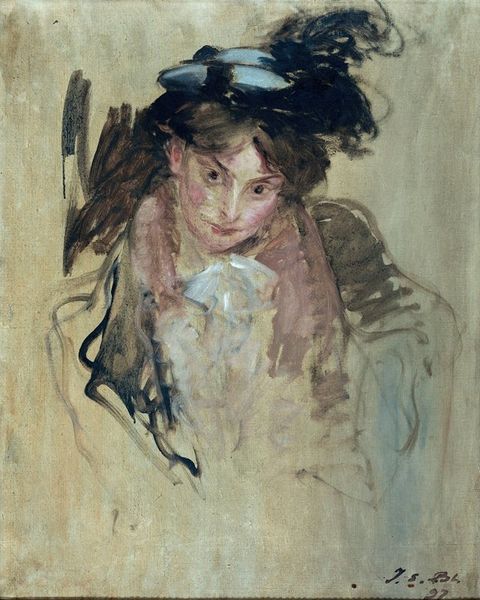
Dimensions: 26 × 21 1/2 in. (66 × 55.2 cm)
Copyright: Public Domain
Editor: This is Jules Pascin's "Hermine David," painted in 1907. It's an oil painting, and there's something unsettling yet compelling about its cool tones. What do you see in this piece? Curator: I see a representation of turn-of-the-century femininity, but also perhaps a critique of its constraints. Consider the subject, Hermine David, who was an artist herself. What does it mean for Pascin, a male artist, to depict her? And how does he portray her agency, or lack thereof? Editor: I hadn't thought about that dynamic. Her gaze is direct, almost challenging. Does that hint at agency? Curator: It could. But look at the brushstrokes, the almost hurried quality. Does it suggest the sitter's active participation or rather, an imposition, a capture of a fleeting moment? We need to consider how women artists, including Hermine David, negotiated patriarchal structures within the art world and whether portraits such as this challenged or reinforced them. Also, Pascin did not typically do formal portraiture. What can be extracted from that knowledge? Editor: So, it's not just a pretty picture; it's a document reflecting power dynamics within the art world and wider society? I find the mole quite prominent as well; is that deliberate? Curator: Exactly. And the placement of the mole might subtly draw our attention to ideals of beauty and their social constructs. Pascin seems to ask: Who gets to represent whom, and how? What impact did Hermine David have on other feminist artists of her time, if any? Editor: This has given me a lot to consider. Thank you! Curator: Likewise. Thinking about art in its historical and social context can deepen our understanding and help us appreciate it.
Comments
No comments
Be the first to comment and join the conversation on the ultimate creative platform.
